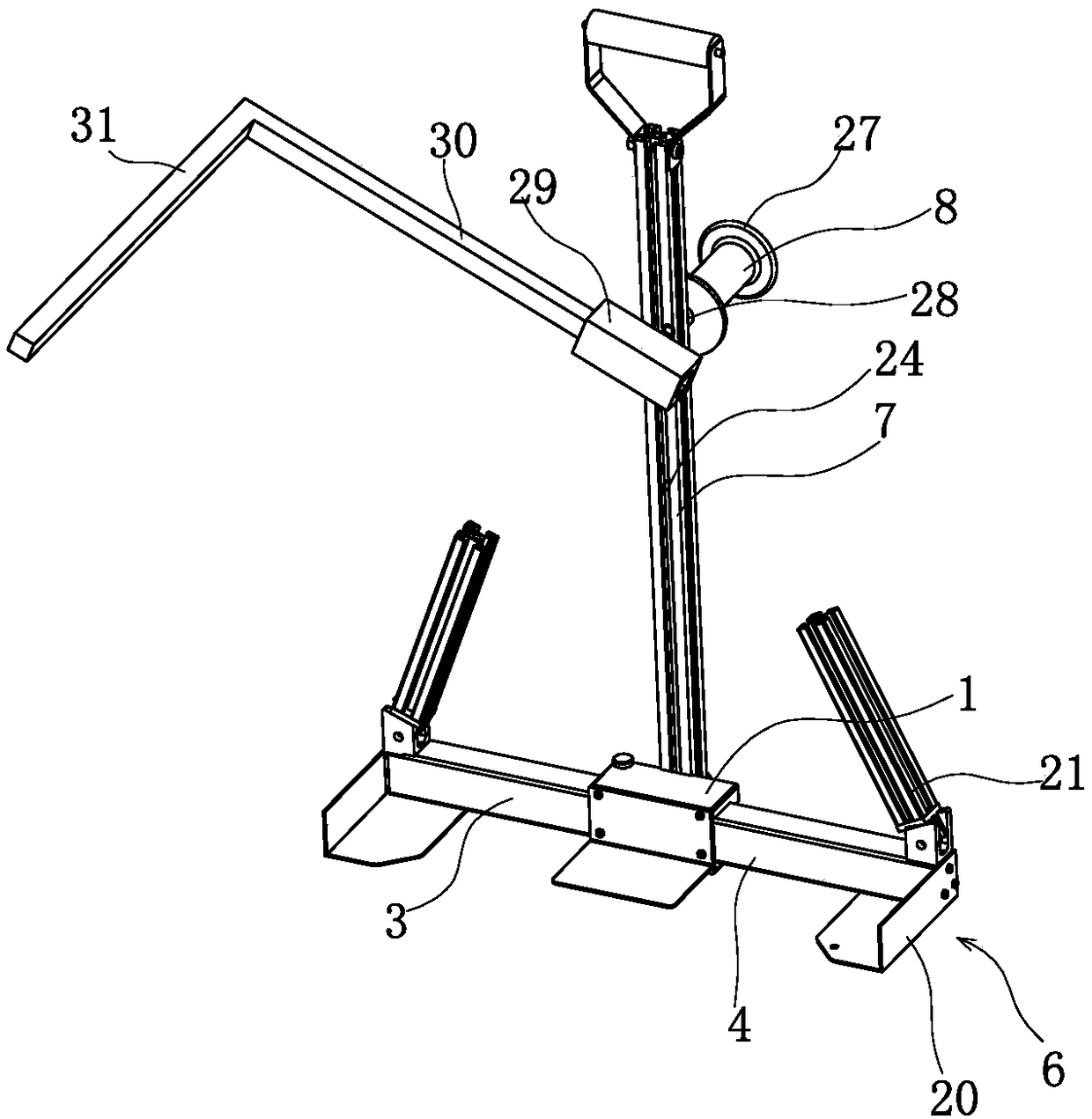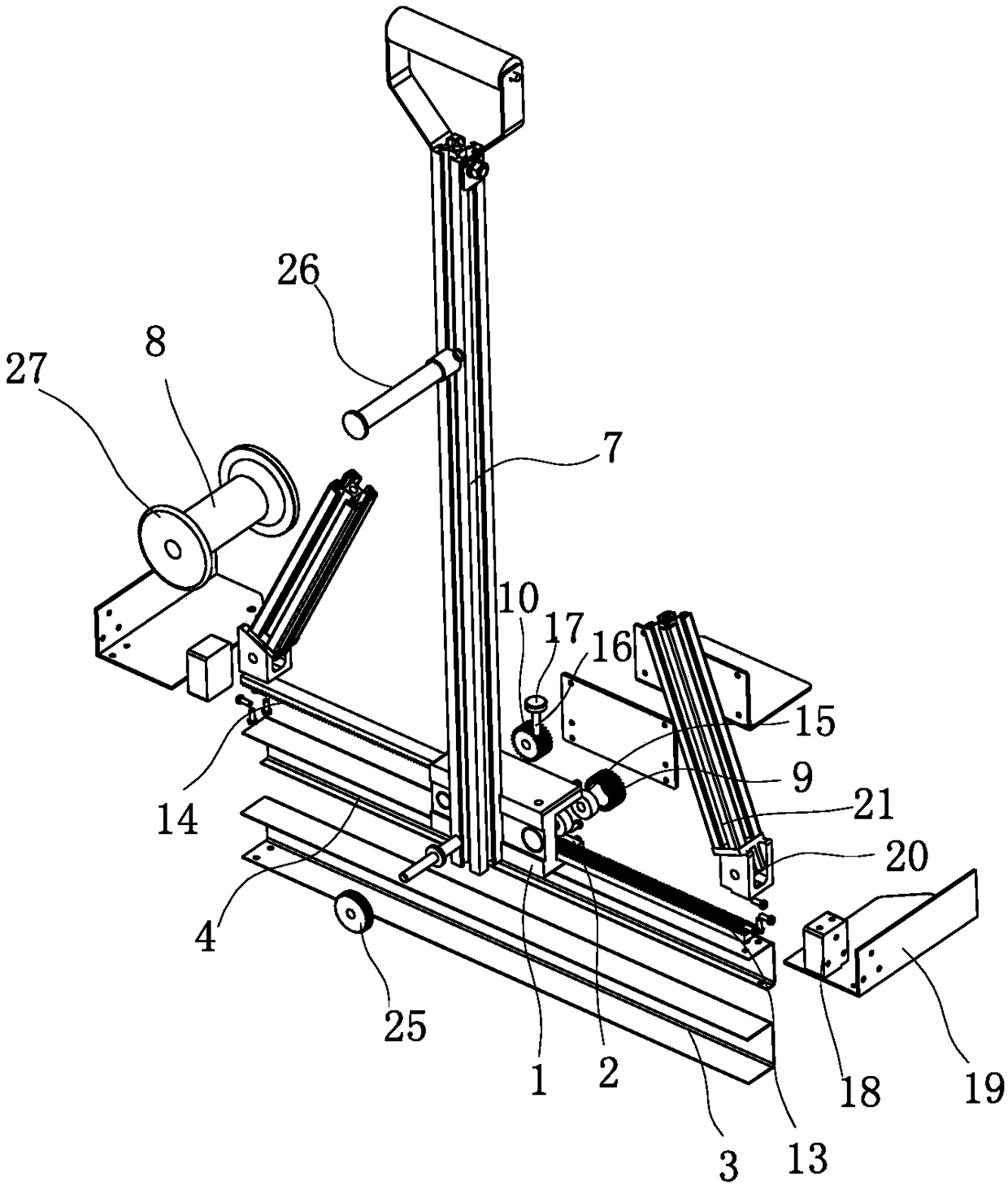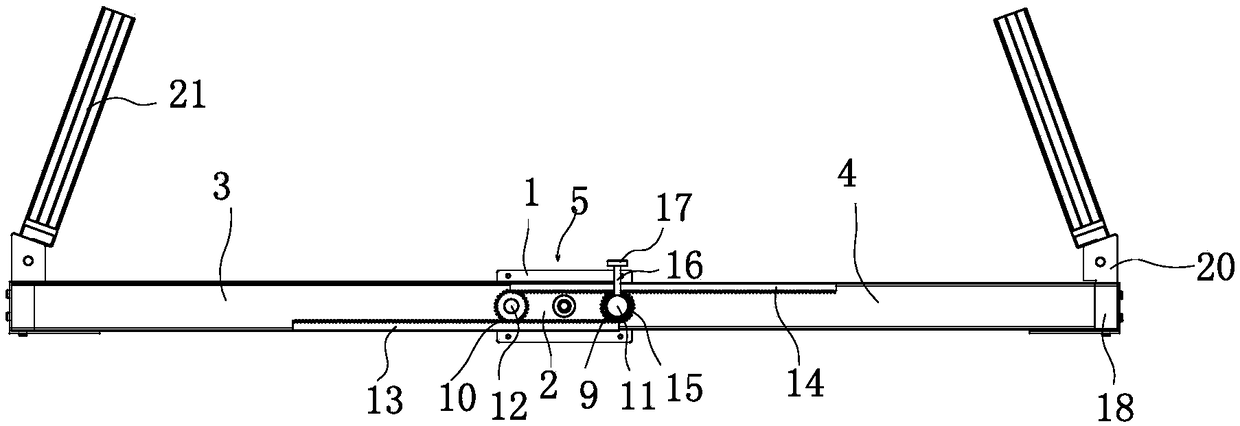Box carrying and stair climbing assisting device
A technology of a power assist device and a box body, which is applied in the directions of transportation and packaging, trolley accessories, trolleys, etc., can solve the problems of inability to adjust the size of the goods and the clamping device, high installation cost, difficult to popularize, etc. Easy to carry effect
- Summary
- Abstract
- Description
- Claims
- Application Information
AI Technical Summary
Problems solved by technology
Method used
Image
Examples
Embodiment Construction
[0027] The following will clearly and completely describe the technical solutions in the embodiments of the present invention with reference to the accompanying drawings in the embodiments of the present invention. Obviously, the described embodiments are only some, not all, embodiments of the present invention. Based on the embodiments of the present invention, all other embodiments obtained by persons of ordinary skill in the art without creative efforts fall within the protection scope of the present invention.
[0028] Such as Figure 1-2 As shown, the power-assisted device for carrying the box upstairs includes a fixed block 1. The fixed block 1 is horizontally provided with a transmission groove 2 that runs through the two side faces of the fixed block 1. The first telescopic shaft is slidably connected to the transmission groove 2. Rod 3 and the second telescopic rod 4, and the first telescopic rod 3 is sleeved on the second telescopic rod 4, the limit transmission mech...
PUM
 Login to View More
Login to View More Abstract
Description
Claims
Application Information
 Login to View More
Login to View More - R&D
- Intellectual Property
- Life Sciences
- Materials
- Tech Scout
- Unparalleled Data Quality
- Higher Quality Content
- 60% Fewer Hallucinations
Browse by: Latest US Patents, China's latest patents, Technical Efficacy Thesaurus, Application Domain, Technology Topic, Popular Technical Reports.
© 2025 PatSnap. All rights reserved.Legal|Privacy policy|Modern Slavery Act Transparency Statement|Sitemap|About US| Contact US: help@patsnap.com



